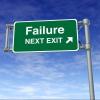Related Content
 |
What’s Your “Size” of Agile? There are approaches to agile that sound great on paper, but will they really be the best choice for your team in practice? Instead of standardizing on any form of agile, think about the results you want. Why not create the environment that works best for you? There's more than one way to do agile. |
|
 |
7 Good Project Management Practices for Replacing a Legacy System When you need to replace a legacy system quickly, it’s tempting to set aside good project management practices and push forward recklessly. But doing so results in delays, cost overrun, and organizational chaos. Take time to understand the problem, plan and estimate the solution, and set up your project for success. |
|
 |
Finding the Bottlenecks in the Agile and DevOps Delivery Cycle To achieve incremental software development and continuous feedback, you need to eliminate the tasks that create bottlenecks, which hinder the flow of development. A chain is no stronger than its weakest link, and identifying these “weak links” is a critical step toward achieving agility and increasing efficiency. |
|
 |
Managing the Turbulence of Organizational Change In times of major change, particularly organizational change, it's normal for people involved to experience turbulence, including anxiety, anger, or uncertainty. If you’re overseeing a change, how you communicate with those affected can significantly decrease—or increase—the duration and intensity of that turbulence. |
|
 |
In Praise of Failure Failure is measured by expectations. If we aim to be perfect, or set the expectation that only perfection is acceptable, we risk losing opportunities to get valuable feedback. Creating an expectation of perfection can lead to stagnation, not success. Instead, view failure as a learning experience. |
|
 |
Manage Project Problems without Getting Trapped by Catastrophic Thinking It would be short-sighted for any project manager not to consider the potential risks in the project and not to evaluate and continue re-evaluating what can go wrong. But there's a difference between planning for risk and falling victim to catastrophic thinking—focusing on unlikely or irrational worst-case scenarios. |
|
 |
How Testers Can Create a Change in Mindset With all of the changes happening in the testing world and what is expected in order to succeed, one of the things that is needed is a change in mindset. Today’s testers need to be able to think outside traditional system requirements and instead focus on end user expectations and market acceptance. |
|
 |
Don’t Assume Bad Intentions When There May Be Another Explanation There's a saying: “Never attribute to malice that which is adequately explained by stupidity.” The possibility of a reasonable explanation for someone’s bad behavior doesn’t mean you have to accept that behavior, but it does suggest that it’s sometimes better to consider the possibility that something else is going on. |






